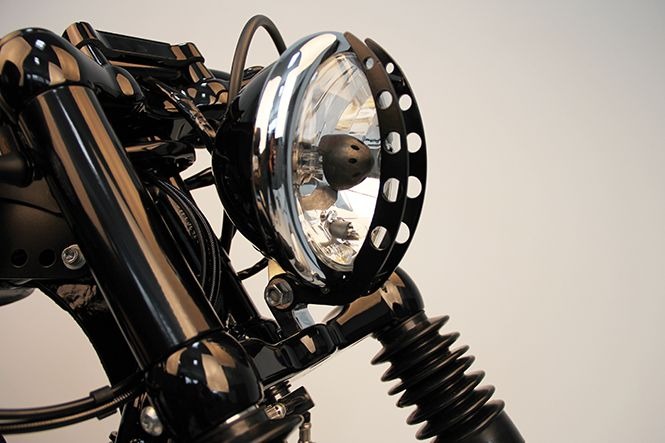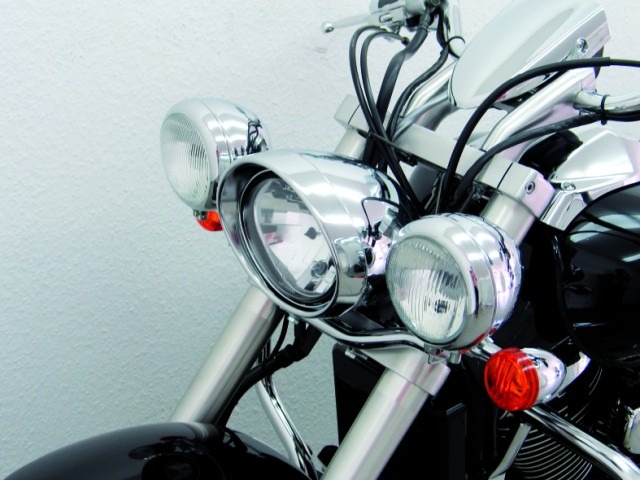Lighting is undoubtedly one of the most important elements of active safety on a motorcycle, an essential element to prevent accidents, especially at night or in adverse weather conditions, situations in which visibility is poor. That's why today we want to help you choose the best lights for your motorcycle.

It goes without saying that the choice of one or the other type of headlights will have a decisive influence on the aesthetics of our motorcycle. More sporty, more elegant, more classic. You decide the style you want to wear, but don't forget the rules.
It is essential to take into account what the General Regulations of Vehicles say about the mandatory lighting of motorcycles, rules that you must comply if you do not want to receive a 'gift' in the form of a fine and, above all, if you want to prevent accidents in the road.
On the color, it should be noted that the different lights are regulated by international regulations: red for rear lights, amber for the side and directional, and yellow or white for the front lights, except for emergency vehicles.
Before explaining the different types of lights, we review what is the mandatory lighting.
3. Brake lights: Indicate the brake actuation to other road users.
4. Front and rear position lights: They warn of the presence on the track and also serve to signal the width of the motorcycle to the other drivers.
5. Direction indicator lights: They are used to indicate in advance the movements you are going to make with your motorcycle.
6. Non-triangular rear reflector: They reflect the lights of the vehicle that circulates behind our motorcycle, notifying them of our presence.
7. License plate light: Illuminates the license plate.
As optional lighting, we have the fog lights, front and rear. They have to be located in the lowest possible area of the motorcycle to achieve a more effective result.

We have made great progress, and we continue to do so, as far as lighting is concerned throughout the history of the engine. Since the halogen bulbs were born in 1960, which are the ones that are still more widely used, the lighting has evolved, to find in the market lights of a very diverse nature, each with its own characteristics.
Halogen lights: Halogen light is composed of a quartz lamp filled with gas and some halogen components such as chlorine and iodine, which serve to protect the tungsten filament or filaments and prevent the darkening of the crystal when it reaches high temperatures. The light is formed when the electric current heats the metal filament until it turns red / white.
The higher the temperature, the whiter and brighter the halogen light produced will be. These headlights have a range of 60 to 70 meters away.
Xenon lights: They are also called discharge lamps. The light, more clear and natural-like, is generated by an electric arc, that is, a continuous spark, produced between two electrodes separated by a quartz bulb that contains high pressure xenon gas. They offer more light power and greater range, about 100 meters, which is gained in safety.
With less energy they are able to produce more light, varying the shade of white to blue depending on the temperature. They emerged in the 90s in high-end cars, but their use has also been extended to motorcycles. Of course, beware of the legality, because the regulation does not collect the purple or blue tones for headlights, so you are exposed to a fine or not to pass the technical inspection.
LED lights: It consists of a system of light emitting diodes, whose intensity is greater than the previous ones. As of 2006, laser headlights begin to be marketed in series vehicles (Lexus), with spectacular performance, being their greatest advantage together with durability, even more than that of the vehicle itself.
They get to illuminate a distance of more than 300 meters, without blind spots, and with them you save up to 60% of energy. Another point in favor is that they do not overheat, so that they do not run the risk of burning.

The latest developments are the variable inclination headlights, which adapt the lighting depending on the angle of inclination of the motorcycle, so that they are even able to put light inside a curve while we are turning, thus increasing the level of visibility.
Laser Lights: It consists of several laser diodes that, connected with phosphorus, generate a more natural and intense light than traditional systems. They arrived in 2014, mounted on the special edition of the BMW i8, They have a greater capacity of reach, up to 600 meters, and consume almost less than half the energy than LEDs.
Of course, its price, at the moment, makes them somewhat inaccessible, so they only tend to be mounted in high-end cars. Its light capacity is such that they can only be used when there are no vehicles running in front, to avoid glare.
Now that you know the existing lighting types, which one do you prefer for your motorcycle?




